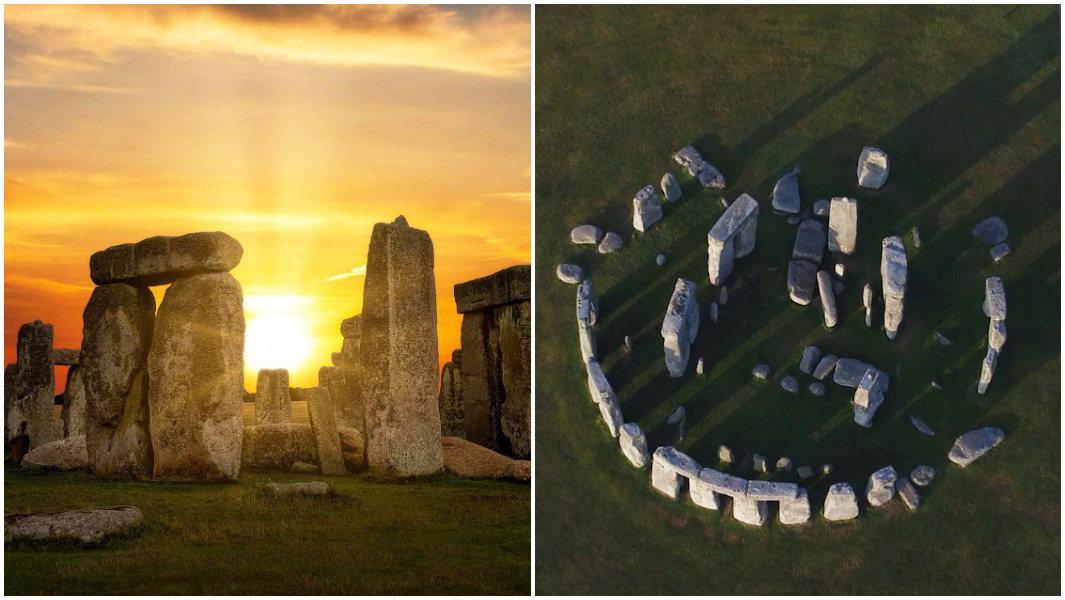Stonehenge: The record-breaking site's mysterious history

The summer solstice - the longest day of the year – marks the beginning of summer.
For the Northern Hemisphere summer solstice, which occurs each year between 20 and 22 June, thousands of people flock to Salisbury Plain in Wiltshire, England to see the world’s largest trilithons at Stonehenge, which are famous for their alignment during this special sunrise.
A trilithon is a megalithic structure consisting of two upright stones and a third across the top as a lintel. The tallest upright stone at Stonehenge is 6.7 m (22 ft) high, with 2.4 m (8 ft) below ground.
Stonehenge was made over 5,000 years ago by a culture that left no written records, thus many aspects of its creation – namely how it was built, why it was built and what it was used for – remain subject to debate.
However, Stonehenge is not a lone monument. It is part of a prehistoric landscape featuring Neolithic and Bronze Age monuments such as Durrington Walls, Stonehenge Avenue, the Cursus and over 350 burial mounds.
By exploring this landscape as a whole we can gain some insight into the ritual practices of our prehistoric ancestors.
Stonehenge was constructed in several stages spanning over 1,500 years. The earliest phase has been dated to 3100 BCE, which involved the digging of a ditch. This ditch was one of the largest cremations cemeteries known in Neolithic Britain.
In fact, Stonehenge continued to be associated with burial throughout its existence, with archaeologists finding many grave sites in the area. The "Amesbury Archer" and "Boscombe Bowmen" have been dated back to 2300 BCE, whilst the unearthed remains of a teenage boy nearby are thought to have been buried around 1550 BCE.
The iconic stones were erected around 2500 BCE after being brought to the site from long distances. The smaller bluestones came from the Preseli Hills, over 250 km (150 mi) away, whilst the larger sarsen stones came from West Woods, 25 km (15 mi) north of Stonehenge.
There is little direct evidence revealing the method used by Neolithic people to transport these stones, however, the prevailing theory involves the use of a track of logs to roll the megaliths along.

The upright stones were placed into large holes and packed in securely, whilst timber platforms were likely used to lift the horizontal stone lintels into place atop the trilithons.
The stones were put together using precise interlocking joints, a technique which has not been used at any other surviving prehistoric monument.
The arrangement of the Great Trilithon, five central trilithons, outer sarsen circle and the Heel Stone are designed to align with the Sun’s movements.
When standing in the centre of Stonehenge during the summer solstice, the rising Sun can be seen through a gap in the outer sarsen circle, just to the left of the Heel Stone, which is a large standing stone outside the stone circle.

It is likely that people gathered at Stonehenge during midsummer and midwinter solstices to perform rituals and celebrate the changing of the seasons.
As previously mentioned, Stonehenge does not stand in isolation, rather it is part of a wider landscape of prehistoric monuments.
Stonehenge is joined to the site of a large Neolithic settlement, Durrington Walls, by the River Avon and its corresponding avenues.
Through the analysis of animal teeth found at Durrington Walls, we know that there was a period between 2600 - 2400 BCE where up to 4,000 people came together to attend midsummer and midwinter festivals.

Around the same time, an immense timber circle was constructed at the site, in addition to a second avenue overlooking the River Avon.
Opposing the solar alignment of the stone circle at Stonehenge, the timber circle at Durrington Walls was oriented towards the rising Sun on the winter solstice.
The avenue was aligned with the setting Sun on the summer solstice and led from the river to the timber circle, mirroring Stonehenge Avenue, which is aligned with the summer solstice’s rising Sun and connects the river to the stone circle.
Furthermore, evidence of large fires on the riverbanks between the two avenues suggests that they were used as a procession route to link both circles.

By the end of the early Bronze Age, circa 1500 BCE, it’s likely that people had forgotten Stonehenge’s original purpose and some of the stones may have already collapsed.
Silently tracking the solstices for the following three thousand years, Stonehenge’s alignment was rediscovered in the 1700s, but it didn’t become common public knowledge until the 1860s.
In the 1900s, the site became associated with neopagan religions such as Wicca, alongside revivals of Druidism. Despite being commonly associated with Stonehenge, the earliest known records of the Druids come from the third century BCE, over two thousand years after Stonehenge was constructed.
To this day, thousands of people still journey to Stonehenge to see the Sun rise on the longest day of the year. With the advent of livestreaming, millions more people around the world are now also able to witness this iconic annual event.
Video and images courtesy of English Heritage


